Author: Vollketten
Part I – France: http://ftr.wot-news.com/2014/11/05/pate … -i-france/
Part II – UK: http://ftr.wot-news.com/2014/11/07/pate … d-kingdom/
Part III – Germany: http://ftr.wot-news.com/2014/11/14/pate … i-germany/
Part IV – USA: http://ftr.wot-news.com/2014/11/20/patently-absurd-part-iv-usa/
So, the first part of Germany had some rather nice tanks, but perhaps they are the cream of the crop of the designs, which didn’t make it. If we delve further into the barrel, there are some more designs of interest. In this edition, we shall concentrate on the Nazi era of 1933-1945. This is not all the nazi Germany has to offer, but just the 8 for now.
Tank with Trench Digging Device
Okay, so it’s not a grave digging device like the google suggested, but google translate can produce some amusing results. It’s actually an idea from the pen of Freidrich Wiele in May 1937 that there is enough spare capacity on a tank that it has time to run not one but two trench diggers separately, driven by the tracks to provide cover for the following infantry. Small problem to me would appear to be the extremely shallow nature of the ‘trench’, which is little more than a shallow ditch and doesn’t even look wide enough for a soldier to lie in. Perhaps ‘shallow grave digging’ tank is accurate afterall.
Schnutgen Bridge Layer
Not a ‘tank’ per se this time, but a previously unknown engineering vehicle by Paul Schnutgen. The pulley system in this case is designed for the launch of a 7.5 metre bridge for crossing ditches, rivers, trenches etc. for tanks to cross over. It uses a frankly horribly complex system of powered pulley wheels to raise and lower this heavy bridge. Still, for November 1936, this is not a bad design.
Mahlkuch one/two man tank
Capable of climbing steps of up to 600mm (he claims), Ernst Mahlkuch in April 1938 decided that a lozenge shaped tube with walking feet was what the Wehrmacht would be wanting. He was wrong.
So it’s presumably a one-off design right? – nope.
Hochammer Einmannkampfwagen
This ‘Einmannkampfwagen’ (one man tank) by Matthaus Hochammer from May 1937 is seriously over optimistic about how much performance he could squeeze out of such a small engine propelling both the man, this armoured coffin and a plough blade at the same time cross country. For me, this design really epitomizes many of the flaws of such designs – the driver exit is directly exposed, they have to lie prone for long period of time, limited field of fire and view and a large slow target, that can easily stopped despite being very low by even the most modest natural or artificial obstacles, not to mention the numerous technical issues with such a design.
Langosch Climbing Tank
The Langosch climbing tank from Konrad Langosch from April 1937 uses a moveable powered curved steel beam, capable of being pushed forwards and/or backwards from the tank to assist it in climbing and descending very high obstacles. It’s not clear what tank he is trying to describe, but it’s still a contemporary design for Nazi Germany with fully sloped frontal aspect. Not bad really for 1937.
Klemt Tank No.2
In August 1939, Julius Klemt conceived this peculiar contraption with sloped frontal aspect and with large single non-overlapping roadwheels and a large turret. This is a gyroscopically stabilized main gun, where the gun is affixed to the turret itself and oscillates as a giant ‘ball’ turret, now that I like. Sadly, the gun is not specified, but working from the rough scale of the roadwheels it could be estimated. He further envisaged his ball turret idea as being a separate entity from the tank chassis, capable of being moved by a truck.
So if we are going to consider mounting a turret in such a manner why not just go the whole hog and mount the entire tank like that.
Klemt Tank No.1
Yep, Julius Klemt again but a little earlier in December 1935, although it was recieved after the later design seen previous to this one. The turret can rotate in the horizontal axis, but this time, the entire vehicle hull rocks around the central fulcrum to elevate or depress the gun. The ride over rough ground is probably enough to make the driver and crew seasick from the rocking.
Bottner Tank Mesh
August Bottner in October 1939 envisaged this fanciful ‘bullet passing mesh’, which is electrified to repel enemy forces, who try to climb onto the vehicle. He very kindly provides a circuit breaking door, so the crew can egress, although there’s no such benefit for friendly troops close by, who have to keep their distance from this convenient cover.
So that’s it for no but there is so much more to come.

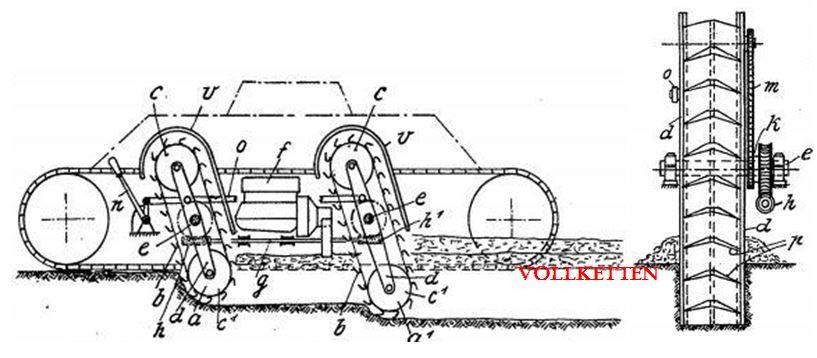
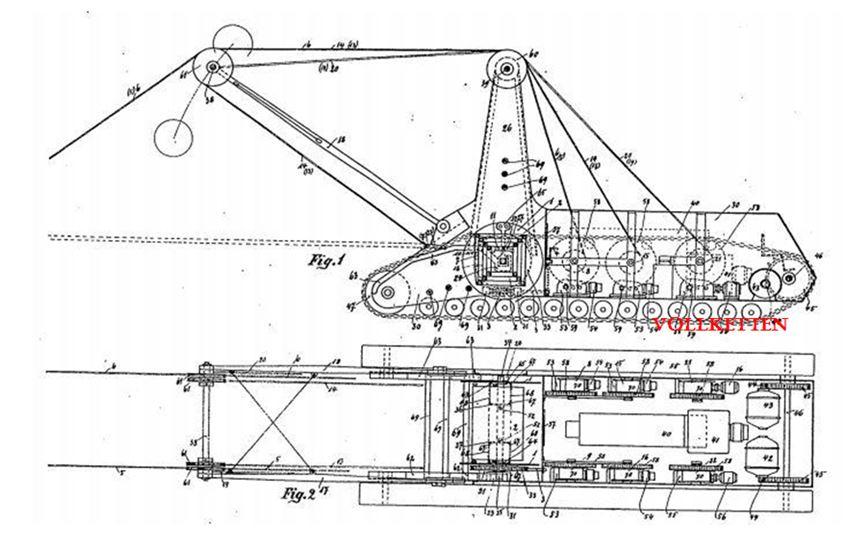

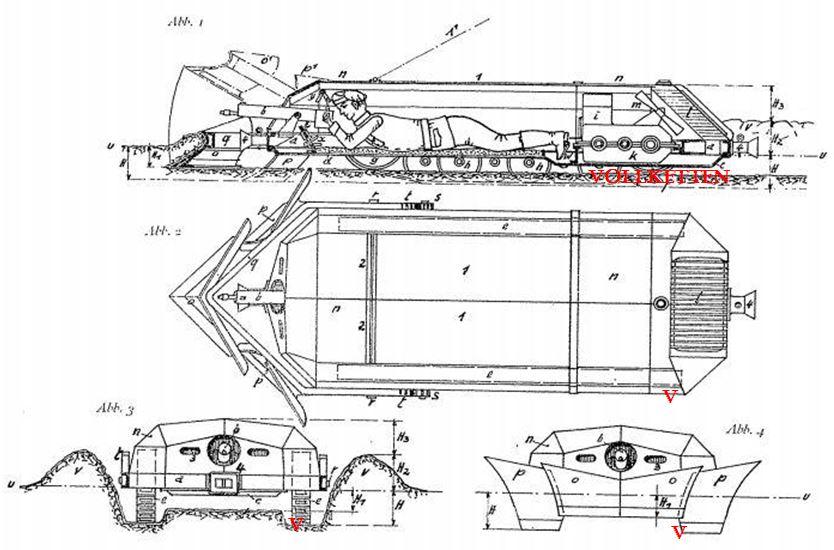
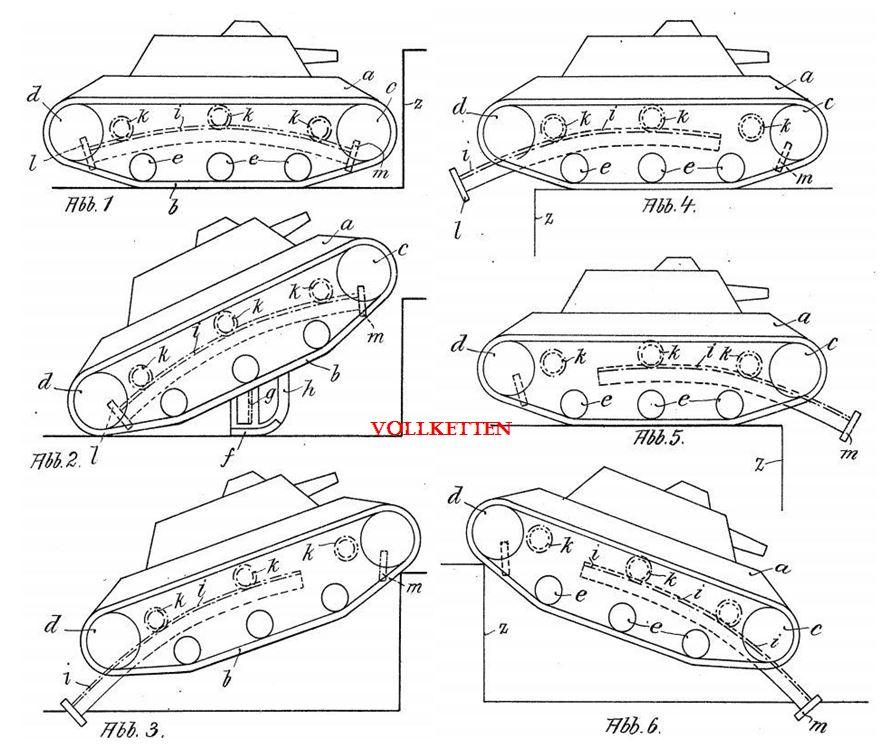

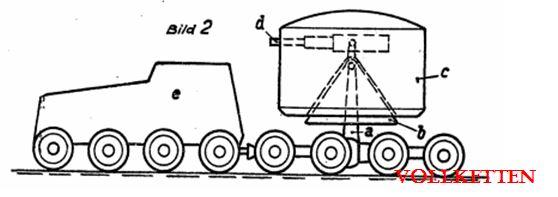
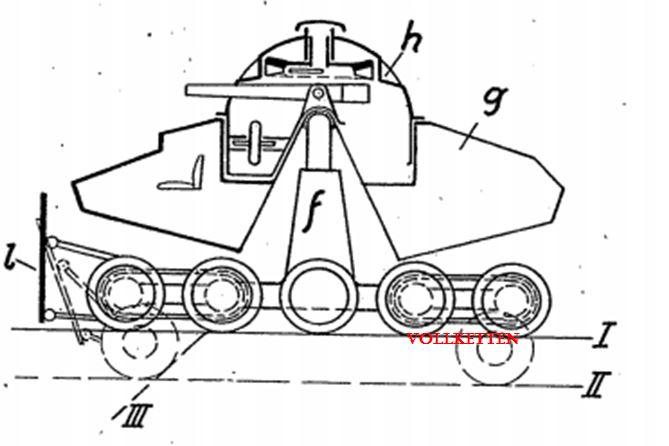
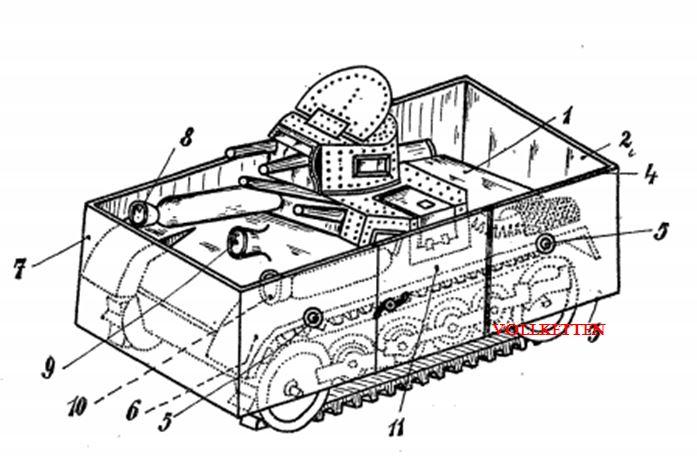
These ‘one-man-tank’ ideas seem to be pretty common. Did anyone actually develop a feasible model?
Kugelwagen?
We don’t even know if that thing ever worked :P Hell, we don’t know what it was supposd to be…
And than again he trolled
Yes. The Italian company Ansaldo came up with the Militraglice d’Assalto, or “Assault Machine Gun” in 1935, which was armed with two MGs or a single mortar. You can find a picture of it here: http://s660.photobucket.com/user/king_poky/media/weekly%20update/7413981992_ecb3a59680_b.jpg.html
Sauce: pg 18, Italian Light Tanks 1919-45, Cappellano and Battistelli, Osprey 2012.
Not sure if even modern engines can handle what they expected such a tiny engine to push.
Klemt Tank no.2, the gyroball turret works just like the Ball gunner on some of the World War 2 bombers.
I love the design really…
Check out the Kugelblitz on a PzIV chassis if you like that. Similar concept on a Panther too if I remember correctly…
I know there were plans to re-fit the Kugelblitz on to a Panzer 38(t) chassis, but you have to wonder, seeing that the VK 1602 had plans for a Flakvierling mount or a 3,7cm AA gun mount, if the 1602 had actually gone into production as the Leopard, being as comparatively small and agile as it was intended to be, how much better the Kugelblitz could have been on that tank.
I dunno about one man tanks, for a strategical blitzkrieg campaign sure, it would suck. But in the context of running through a no mans land covered by dozens of mgs, rifles and arty/mortars ? Or even moving up a street covered by snipers/mgs which was common in ww2, it kinda makes sense.
The Schnutgen Bridge Layer reminds me of the Italian L3 Bridgelayer
http://1.bp.blogspot.com/-rqcmBGpJp28/UglOoyBD9dI/AAAAAAAAG0c/182Nnt97vjo/s320/cv33passerella272.jpg
The Bottner Tank Mesh can be said to be ahead of its time as they are testing various electric protection systems for armoured vehicles now.
Rope-and-pulley power were very common and practically only way to do this all that time, and even long after. Hydraulic pistons need smooth surfaces and good sealings, and those were hard to manufacture and extremally expensive back then.
Given the nature of world war one , a grave digging machine would have been , sadly , very useful.
Is it just me, or that August Bottner drawing is really a mess?